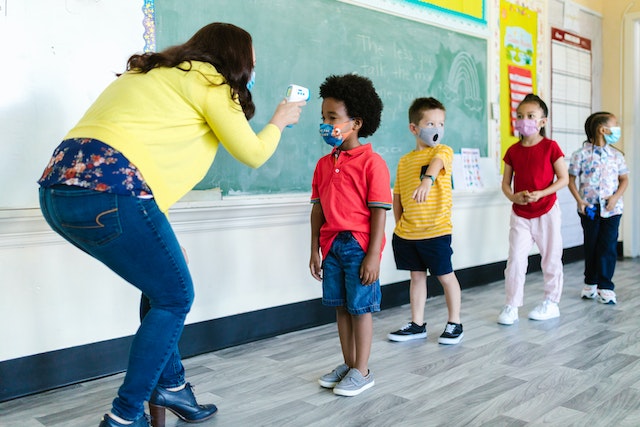Read the detailed description of Quest's Program Details!
The large majority of children are returning to in-person learning environments this fall. This can bring about a lot of different emotions from excitement, relief, to anxiety, sadness and nervousness in both children and parents. Researchers examining MAP testing scores for children in the 3rd through 8th grade have demonstrated that overall children did make academic gains this past year in virtual learning, but the gains are diminished from typical gains in areas such as reading and math. They noted that some groups were more likely to experience a larger learning loss including children in grades 3 to 5, children of color and poorer children. [1]
I can tell you that we have been seeing a huge increase in anxiety and mood disregulation for many of the children we serve as the school year has approached. This month, I wanted to provide some tips and areas to consider as you assist your child with the transition back to in-person learning.
1. Acknowledge the change that is coming. It can be important to talk with children about what to expect with a return to in-person learning. This could potentially include labeling different types of feelings that your child might experience with this transition as well as discussing changes in expectations in an in-person learning environment that has multiple changes in place from when they were last physically on campus.
2. Allow for a transition back to the classroom. Many of the children we specialize in serving struggle with transitions in general. Preparing for how this year will likely feel like a larger transition is important in preparing for the start of this school year. Discussing aspects of the transition, having on-campus tours to front load children, discussing expectations for the upcoming year and increasing relaxation and coping skills could all be an important part of a transition. It is important to realize that many children will need more supports in this area than usual and this is not unexpected given the situation. I find that it is also often helpful to review successes such as when a child has had with previous transitions, successfully coped with new environments initially and a reminder that they will settle into new school routines as they have in the past.
3. Consider trauma experience in connection with learning. It is crucial that school environments, teachers and parents consider the impact of collective trauma on children returning this year. The pandemic has been a trauma that has impacted children, parents, adults, school personnel and the local community. Acknowledging experiences of loss, emotions and the continued impact of the pandemic as well as other traumas can help set children up for success as they return to the classroom.
The National Association of School Psychologists (NASP) has pointed out that trauma-informed schools promote: [2]
- Feelings of physical, social, and emotional safety in students.
- A shared understanding among staff about the impact of trauma and adversity on students.
- Positive and culturally responsive discipline policies and practices.
- Access to comprehensive school mental and behavioral health services.
- Effective community collaboration.
Discussing with school personnel what trauma-informed programming is in place and what could be done at home to match school teaching and interventions in this area would likely be helpful.
4. Collaborate with school professionals. It will be important to collaborate with school professionals to increase the presence of a smooth transition. For children with educational, behavioral, and social-emotional goals it might be very important to more closely examine how children are adjusting to being back on campus and to engage in a re-evaluation of current needs. A re-evaluation may be critical as many children’s goals were adjusted last year for a virtual learning environment and now don’t reflect children’s current needs. Many children also may benefit from additional goals and supports related to their emotion regulation due to the impact of the pandemic and stress related to learning loss. A re-evaluation (whether formal or informal) may help to ensure that children’s needs are being addressed and their academic teaching and goals are adjusted to current levels.
5. Build in extra relaxation strategies. As emotions might be high during a large transition it might be really important to build in extra down time and relaxation strategies in afternoons following school. Having increased structure and stability can also decrease anxiety for some children. Creating time to exercise, eat healthy and get adequate sleep can also be key strategies to assist children with their mood at any time and can be especially important in times of likely stress.
I hope that these strategies are helpful as you move forward in this next stage of learning. Wishing you a smooth transition!
[1] Clarke, R. Many predicted some kind of “Covid slide” in learning. Test results show how bad it is. CNN News Online Updated 8/25/21
[2] Crisis Prevention Institute. How trauma-informed schools help every student succeed. https://www.crisisprevention.com/Blog/Trauma-Informed-Schools 3/31/21

